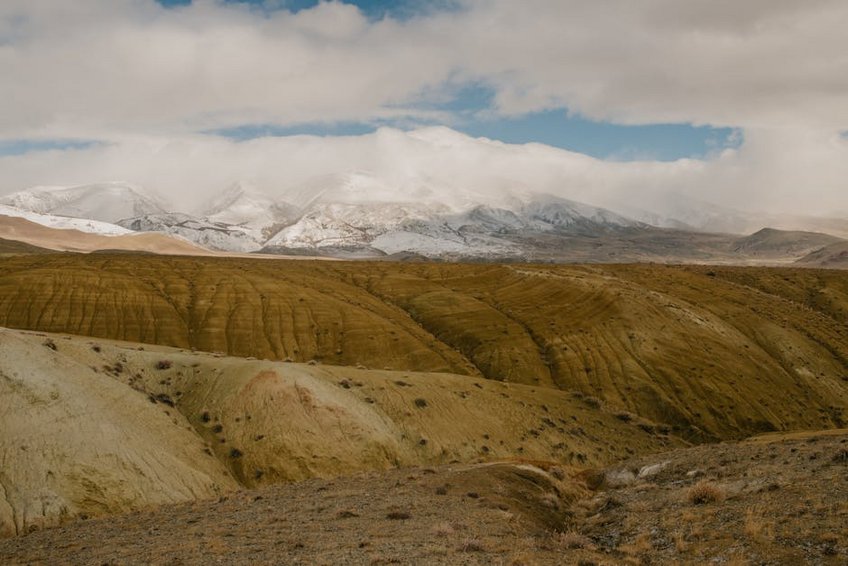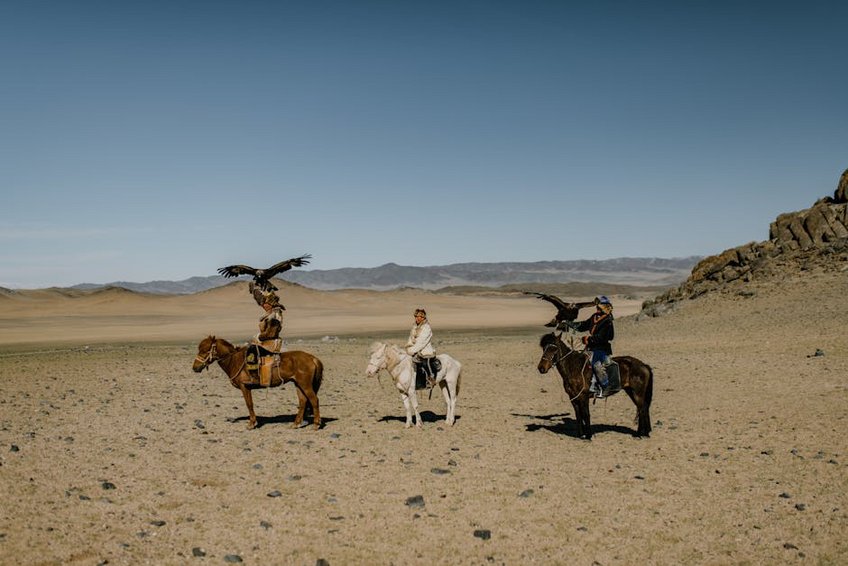Experience the Authentic Mongolia Gobi Desert Nomad Stay
Embarking on a Mongolia Gobi Desert nomad stay offers you one of the most unique travel experiences on Earth, where you’ll immerse yourself in the timeless traditions of nomadic herders amidst vast, otherworldly landscapes. This isn’t just a vacation; it’s a cultural deep-dive into a way of life that has remained largely unchanged for centuries, where you’ll sleep in traditional gers (yurts), share meals with local families, and witness the breathtaking beauty of the desert’s shifting dunes and star-filled skies. The Mongolia Gobi Desert nomad stay allows you to disconnect from modern life and reconnect with nature in its purest form, learning ancient skills like horse riding and camel trekking directly from the experts who call this harsh yet beautiful environment home. You’ll discover why this experience resonates so deeply with travelers seeking authenticity and adventure, creating memories that will last a lifetime while supporting sustainable tourism practices that benefit local communities.
Mongolia Gobi Desert Nomad Stay Essential Information
Understanding what a Mongolia Gobi Desert nomad stay entails will help you prepare for this transformative journey into one of the world’s last truly nomadic cultures. You’ll be living with Mongolian herder families who move seasonally with their livestock, primarily goats, sheep, camels, and horses, following ancient migration patterns across the vast Gobi landscape. This experience goes beyond typical tourism; you become part of the family’s daily routines, helping with chores like milking animals, preparing traditional foods, and learning about the deep spiritual connection Mongols have with their environment. The Gobi Desert itself spans southern Mongolia and northern China, but the most authentic nomad stays occur in Mongolia’s Gobi Gurvansaikhan National Park region, where you’ll encounter everything from flaming cliffs to ice-filled canyons despite the desert’s reputation for extreme temperatures.
What is a Mongolia Gobi Desert Nomad Stay Experience?
- You’ll live in traditional gers (portable felt tents) with nomadic families, experiencing their hospitality and daily routines firsthand while learning about their sustainable lifestyle in this challenging environment.
- The experience includes participating in authentic activities like camel trekking across sand dunes, horse riding through steppes, and helping with livestock care, giving you practical insights into nomadic survival skills.
- You’ll enjoy traditional Mongolian cuisine prepared with local ingredients, including dairy products from the family’s animals and meat dishes cooked over open fires, while learning about food preservation techniques essential for desert living.
- Budget options starting at $50-80 USD per day include basic ger stays with local families, shared transportation, and simple meals, ideal for backpackers and independent travelers willing to embrace rustic conditions.
- Mid-range experiences costing $100-150 USD daily provide more comfort with private gers, better vehicles for desert exploration, and included activities like camel trekking and guided visits to key attractions.
- Luxury nomad stays at $200-300+ USD per day feature upgraded accommodations with amenities, private guides, and exclusive access to remote areas, plus higher-quality meals and transportation.
- Official Mongolia Tourism Board
- Lonely Planet Gobi Desert Travel Guide
Cultural and Historical Context of Gobi Nomadism
Mongolia’s nomadic heritage dates back thousands of years, with the Gobi Desert serving as a crucial corridor along the Silk Road where different cultures and traditions intersected. You’ll discover how modern nomads maintain ancient practices while adapting to contemporary challenges, creating a fascinating blend of tradition and innovation. The Mongolian concept of “hospitality to strangers” remains deeply ingrained, ensuring you’ll be welcomed warmly into family life despite language barriers, with gestures and shared experiences bridging cultural divides.
Why Choose a Mongolia Gobi Desert Nomad Stay
Opting for a Mongolia Gobi Desert nomad stay provides unparalleled access to authentic cultural exchange that few other travel experiences can match. You’ll gain firsthand understanding of how families thrive in one of Earth’s most extreme environments, developing appreciation for their resourcefulness and connection to nature. This experience supports community-based tourism initiatives that directly benefit local families, ensuring your travel dollars have positive impact while preserving traditional lifestyles for future generations.
Mongolia Gobi Desert Nomad Stay Planning Your Trip
Proper planning ensures your Mongolia Gobi Desert nomad stay becomes the adventure of a lifetime rather than a logistical challenge, requiring careful consideration of seasons, budgets, and preparation for the desert’s unique conditions. You’ll need to decide between organized tours that handle transportation and arrangements or independent travel that offers more flexibility but requires greater self-sufficiency in this remote region. Most visitors combine their nomad stay with other Gobi attractions like the Flaming Cliffs dinosaur fossil sites and Yolyn Am ice canyon, creating a comprehensive desert experience that typically spans 5-10 days depending on your interests and available time. Booking through reputable local operators ensures authentic family connections while providing necessary translation services and emergency support in this sparsely populated region where infrastructure remains limited.
Best Time to Visit Mongolia Gobi Desert for a Nomad Stay
The ideal window for a Mongolia Gobi Desert nomad stay falls between May and September, when temperatures range from comfortably warm to hot during daytime hours. July and August offer the warmest conditions with averages around 25-30°C (77-86°F), perfect for exploring the desert landscapes, though occasional rain showers can occur. Spring (May-June) provides beautiful wildflower displays across the steppes, while autumn (September) offers cooler temperatures and stunning golden light for photography, with fewer tourists than peak summer months. Winter visits between October and April are challenging due to extreme cold that can drop below -30°C (-22°F), though they provide unique opportunities to experience nomadic winter traditions if you’re properly equipped for subzero conditions.
Budget Planning and Costs for Your Nomad Experience
Essential Preparation Checklist for Desert Living
Preparing adequately for your Mongolia Gobi Desert nomad stay ensures you remain comfortable and safe throughout your adventure in this remote environment. You’ll need to pack layered clothing for temperature extremes, including warm layers for cool nights even in summer, sturdy hiking boots for exploring rocky terrain, and sun protection like hats and high-SPF sunscreen for intense daytime sun exposure. Essential items include a reusable water bottle with purification tablets since clean water sources are limited, basic medical supplies for minor ailments, and power banks for electronic devices as electricity availability varies significantly between nomadic camps.
What to Pack for Your Mongolia Gobi Desert Adventure
Your packing list should prioritize versatility and practicality for the Gobi’s variable conditions, focusing on items that serve multiple purposes in this resource-limited environment. Include quick-dry clothing that can be layered, a quality sleeping bag rated for cool temperatures since ger heating depends on stove availability, and personal toiletries as amenities are basic. Don’t forget items like headlamps for nighttime movement around camp, binoculars for wildlife spotting, and small gifts for host families such as useful household items or children’s toys to show appreciation for their hospitality.

Mongolia Gobi Desert Nomad Stay Top Attractions and Activities
During your Mongolia Gobi Desert nomad stay, you’ll discover an incredible diversity of landscapes and experiences that defy the common perception of deserts as barren wastelands. The Gobi encompasses everything from massive sand dunes like the legendary Khongoryn Els that sing when wind passes over them to dramatic granite formations and surprisingly lush oases supporting unique wildlife. You’ll have opportunities for activities ranging from gentle camel treks across rolling dunes to more adventurous hiking through canyons where ice persists year-round, all while learning about the desert’s ecology from your nomadic hosts who possess generations of knowledge about this environment. The combination of natural wonders and cultural immersion creates an unforgettable travel experience that engages all your senses and leaves you with profound appreciation for this unique corner of our planet.
Must-See Highlights in the Gobi Desert
No Mongolia Gobi Desert nomad stay would be complete without visiting iconic sites like the Flaming Cliffs (Bayanzag), where paleontologist Roy Chapman Andrews first discovered dinosaur eggs in the 1920s, creating spectacular photo opportunities especially at sunrise or sunset when the sandstone glows intensely red. You’ll want to explore Yolyn Am (Eagle Valley) in Gurvansaikhan National Park, where deep narrow canyons shelter surprising ice fields that sometimes persist through summer, creating cool oases that contrast dramatically with the surrounding desert. The Khongoryn Els sand dunes stretch over 100 kilometers with some peaks reaching 300 meters high, offering breathtaking views and the chance to hear their mysterious “singing” phenomenon caused by shifting sands.
Hidden Gems and Local Favorites Off the Beaten Path
Venture beyond the main tourist trail to discover lesser-known treasures like the Moltsog Els sand dunes, which offer similar beauty to Khongoryn Els but with far fewer visitors, allowing for more intimate experiences with the landscape. Your nomadic hosts might guide you to sacred mountains like Ikh Bogd where local families make offerings at ovoo (stone cairns), providing insight into Mongolian spiritual traditions connected to the natural world. Don’t miss opportunities to visit smaller family-run camel breeding camps where you can learn about Bactrian camel husbandry and perhaps even assist with milking or tending to newborn calves during spring visits.
Adventure Activities You Can’t Miss
Your Mongolia Gobi Desert nomad stay opens up numerous adventure possibilities, starting with camel trekking across the dunes at sunrise or sunset when the light creates magical shadows and colors across the landscape. More active travelers can embark on multi-day hiking expeditions between nomadic camps, carrying only day packs while support vehicles transport main luggage, allowing deep immersion in the desert’s tranquility. During winter months, you might experience ice climbing in frozen canyons or learn traditional winter survival skills from nomads, while summer offers excellent stargazing opportunities with remarkably clear skies unaffected by light pollution.
Mongolia Gobi Desert Nomad Stay Practical Travel Information
Navigating the practical aspects of your Mongolia Gobi Desert nomad stay requires understanding the region’s limited infrastructure and planning accordingly for transportation, accommodation, and daily logistics. You’ll typically reach the Gobi by flying from Ulaanbaatar to Dalanzadgad, the provincial capital, then continuing by 4×4 vehicle to nomadic family camps, though some travelers opt for the scenic 10-12 hour drive from the capital instead. Accommodation ranges from basic gers with shared facilities to more comfortable tourist ger camps with private bathrooms, though authentic nomad stays emphasize simplicity and cultural authenticity over modern comforts. You should prepare for limited communication options since mobile service remains patchy outside towns, and bring sufficient cash in Mongolian tögrög as credit card acceptance is rare in rural areas.
| Category | Options/Features | Price Range (USD) |
|---|---|---|
| Accommodation | Basic family ger, shared facilities | $15-30 per night |
| Transportation | 4×4 vehicle with driver/guide | $80-150 per day |
| Activities | Camel trekking, guided hikes | $20-50 per activity |


